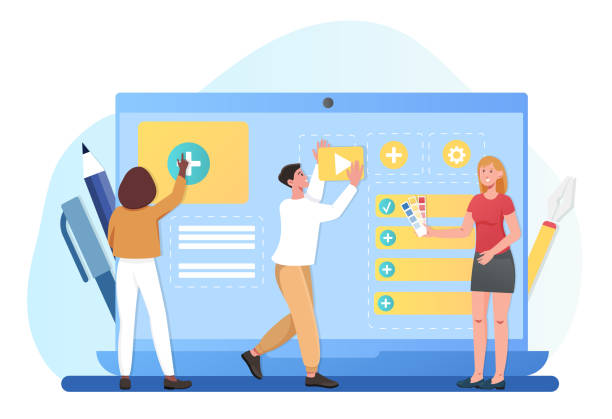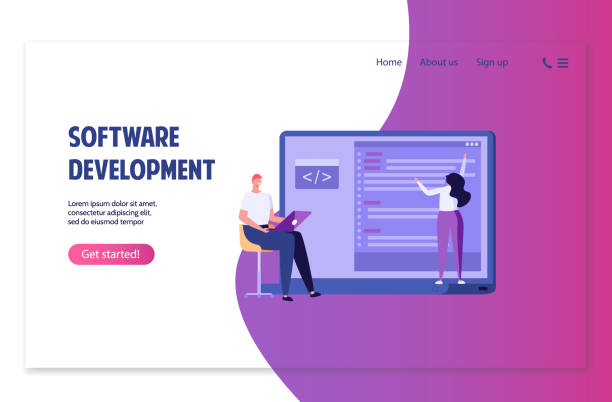Introduction to Modern UI Web Design and Its Importance

In today’s digital world, where competition is at its peak, having a website is not merely an online presence, but a strategic investment for the success of any business.
One of the most important factors in this regard is modern UI web design (UI) and User Experience (UX).
These two concepts, more than ever, influence user engagement, conversion rates, and ultimately, brand credibility.
Designing a website that is not only beautiful but also offers an easy and enjoyable user experience is no longer an advantage; it is an undeniable necessity.
Users expect websites to be fast, responsive, and visually appealing, and to be able to easily meet their needs.
Ignoring these principles can lead to loss of customers and reduced market share.
For this reason, investing in modern UI web design is a crucial step towards achieving business goals.
An excellent user interface builds user trust, encourages them to browse more on the site, and increases their likelihood of returning.
This is important not only for e-commerce websites but is vital for any type of online platform, from personal blogs to corporate portals.
In fact, modern UI design is a bridge between your business and its audience, forming an effective and lasting connection.
This becomes even more critical in today’s dynamic markets, where consumers have countless options.
A website that provides a poor user experience will be quickly abandoned by users, even if it contains very valuable content.
Are you losing business opportunities due to an outdated website? With Rasawwb, solve the problem of not attracting potential customers through your website forever!
✅ Attract more high-quality leads
✅ Increase brand credibility in the eyes of customers
⚡ Get free consultation for corporate website design
Key Principles in Modern UI Design for Websites

To achieve a modern and effective UI web design, adhering to specific principles is essential.
The first and most important principle is Responsive Design.
In today’s world, where users access the internet from various devices such as mobile, tablet, and desktop, the website must be able to adapt to any screen size.
This not only improves the user experience but also holds high importance for SEO.
The second principle is Simplicity and Minimalism.
Removing unnecessary elements and focusing on the main content helps users access the information they need without confusion.
Minimalist design, in addition to visual appeal, also helps increase site loading speed.
The third principle is Consistency.
Using a consistent layout, color scheme, and fonts across all pages of the site conveys professionalism to the user and facilitates easier navigation.
This consistency in user-friendly website design also increases user trust.
The fourth principle is Accessibility.
The website should be usable for people with various abilities, including those with disabilities.
This includes using appropriate color contrast, the ability to change font size, and support for assistive tools.
The fifth principle is Visual and Interactive Feedback.
Any user interaction with the site, such as clicking a button or filling out a form, should be accompanied by appropriate feedback so that the user knows their action was successful.
These principles together make it possible to build a website with a modern UI that is not only attractive but also performs exceptionally well.
Visual and Interactive Elements in Modern UI Implementation

In the process of implementing advanced user interfaces, the correct selection and application of visual and interactive elements play a vital role.
These elements shape the look and feel of a website and directly impact the user experience.
Typography is one of the most important of these elements.
Choosing readable fonts appropriate for brand identity, along with the correct use of text hierarchy (headings, paragraphs), plays a significant role in attracting the audience and conveying the message.
Color palette is another visual factor that can create different feelings and perceptions in the user.
Choosing harmonic colors appropriate to the site’s theme, along with maintaining proper contrast for readability, is a basic principle.
Iconography, by providing visual guidance and reducing the need for text, helps improve content comprehension speed and navigation.
Icons should be simple, understandable, and consistent.
Furthermore, Whitespace is also a powerful visual element that helps increase readability, focus on the main content, and create a sense of calm.
These spaces prevent the design from looking cluttered.
Alongside visual elements, Micro-interactions are also very important.
These small interactions, such as subtle animations when clicking a button or changing the state of an element on hover, make the user experience more enjoyable and convey a sense of responsiveness from the site to the user.
Using these elements in user-friendly website design not only brings visual appeal but also increases efficiency and usability.
Below is a table of key elements and their applications:
| Element | Main Application | Example |
|---|---|---|
| Typography | Increase readability and visual identity | Choosing appropriate fonts for titles and text |
| Color Palette | Create visual mood and feeling, differentiate elements | Using brand colors in buttons |
| Icons | Visual guidance, reduce text, fast navigation | Shopping cart icon, profile icon |
| Whitespace | Increase readability, focus, and aesthetics | Space between paragraphs or sections |
| Micro-interactions | User feedback, enhance user enjoyment | Button animation on click |
The Impact of Modern UI on User Experience and SEO

One of the fundamental questions in the web sphere is how modern UI web design can contribute to improving SEO (Search Engine Optimization). The answer is that although UI is not a direct ranking factor, it significantly impacts SEO indirectly by improving User Experience (UX).
Search engines like Google aim to provide the best experience to their users.
Therefore, websites that retain users longer and have a low bounce rate will have a better chance of ranking higher.
A user-friendly website design encourages users to stay on the site longer, visit more pages, and interact more with the content.
These behaviors send positive signals to search engines.
For example, if a website quickly loses users due to complex navigation or an unattractive appearance, search engines will consider this a sign of low quality and reduce its ranking.
On the other hand, building a website with a modern UI, which has high loading speed and displays well on mobile, are very important factors for mobile-friendly SEO, which Google highly values.
Also, the logical and hierarchical structure provided by a good user interface helps search engine crawlers better understand and index the site’s content.
Consequently, while beautiful design alone is not enough, coupled with excellent performance and an unparalleled user experience, it is a powerful driver for SEO success and increased visibility in search results.
A website with a modern UI not only keeps your customers satisfied but also helps you stand out in the competitive digital space and attract more organic traffic.
Are you bothered by losing customers who visited your site to make a purchase?
Rasawwb is your specialized solution for a successful online store.
✅ Significantly increase your online sales
✅ Build trust and professional branding with customers⚡ Get free consultation from Rasawwb specialists!
Modern Tools and Techniques in Modern Website Design
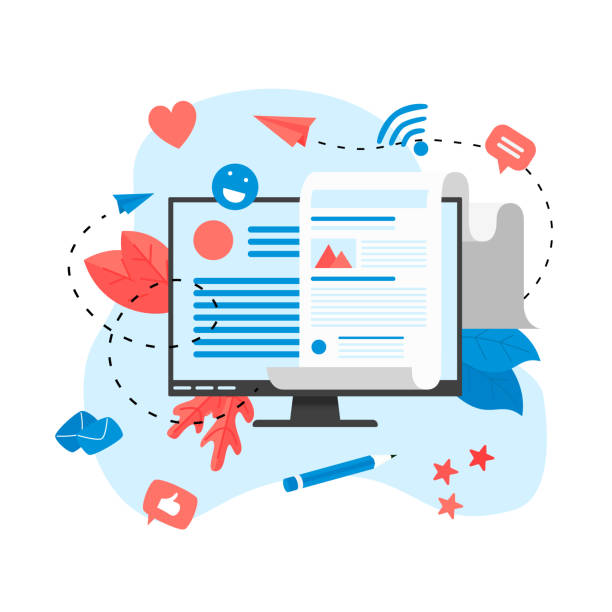
Achieving a modern UI web design requires familiarity with a set of advanced tools and techniques that make the design process simpler, more efficient, and more creative.
Currently, powerful software like Figma, Sketch, and Adobe XD are recognized as industry standards for UI and UX design.
These tools provide extensive capabilities for wireframing, prototyping, and design systems.
Figma has gained significant popularity due to its unparalleled team collaboration features and cloud-based operation, while Sketch for MacBook users and Adobe XD due to deep integration with other Adobe products, are powerful options.
Alongside tools, techniques such as Component-based Design have gained increasing importance.
This approach allows designers to create UI elements in a modular fashion that are reusable and scalable.
This not only accelerates the design process but also helps maintain visual consistency throughout the website.
Prototyping is another critical technique that enables designers and stakeholders to simulate and test user interactions and workflows before final coding.
This process helps identify potential problems in the early stages and reduces redesign costs.
Additionally, User Testing, by collecting direct feedback from real users, provides valuable insights for design optimization.
Using these tools and techniques in building a website with a modern UI results in a product that is not only beautiful and functional but also built upon real user needs and industry best practices.
Familiarity and mastery of these aspects are essential for any modern web designer.
Challenges and Solutions for Advanced UI Web Design
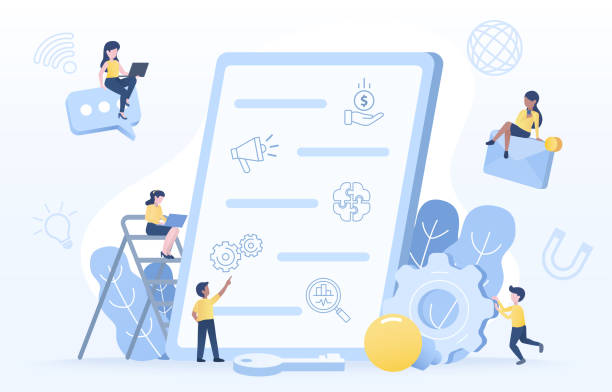
Although modern UI web design offers numerous advantages, it also comes with challenges that designers and developers must address.
One of the biggest challenges is keeping up with rapid changes in technology and design trends.
The digital world is constantly evolving, and what is considered modern today might be obsolete tomorrow.
The solution is for design teams to continuously learn and update their knowledge and participate in conferences and webinars.
Another challenge is balancing aesthetics and functionality.
Sometimes, designers focus too much on visual aspects and overlook the importance of usability and ease of use.
A website that is beautiful but not functional is considered a failure.
The solution is for the design process to always be based on User-Centricity and for user tests to be conducted continuously.
Furthermore, compatibility with different browsers and devices is a technical challenge.
Ensuring that the website displays correctly across all major browsers (Chrome, Firefox, Safari, etc.) and various devices requires comprehensive and meticulous testing.
Managing client expectations can also be a challenge; clients may have different views on what “modern” or “user-friendly” means.
Clear communication and providing initial prototypes can help align expectations.
Finally, security and privacy have become critical challenges with the increase in online interactions.
Implementing an advanced user interface should include designs that ensure the security of user data.
By identifying these challenges and applying appropriate solutions, a truly effective and modern UI website can be created that remains successful for a long time.
Case Studies and Successful Examples of User-Friendly Website Design
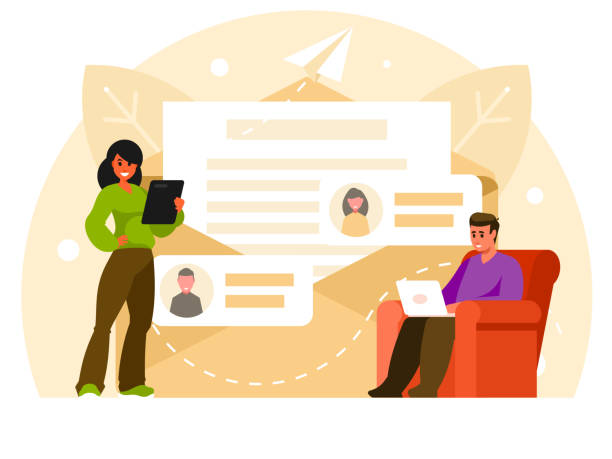
Examining successful examples of modern UI web design can be inspiring and a good guide for businesses.
Many leading companies worldwide, by investing extensively in this area, have managed to provide an unparalleled user experience for their customers and, as a result, achieved significant successes.
For example, the website of Apple is a prime example of a user-friendly website design.
By focusing on minimalism, high-quality images, intuitive navigation, and readable fonts, Apple has managed to create a unique user experience that is both luxurious and accessible.
The Airbnb website is another example of success in building a website with a modern UI.
By using an attractive visual design, powerful search filters, and an easy booking process, Airbnb has attracted millions of users worldwide.
The use of large, high-quality images of accommodations, as well as a user review system, has brought trust and transparency to them.
In the field of e-commerce, the Amazon website, despite the enormous volume of products and information, has succeeded in providing a relatively user-friendly interface that makes searching, comparing, and purchasing products easy for users.
Features such as personalized recommendations and a simple checkout process have contributed to its success.
These examples demonstrate how an advanced UI implementation can literally be the difference between the success and failure of an online business.
Attention to detail, a deep understanding of user needs, and creative execution are common factors in the success of these websites.
The table below provides a comparison of best practices versus common mistakes in UI design:
| Best Practices | Common Mistakes |
|---|---|
| Minimalism and Simplicity | Cluttered design with excessive elements |
| Responsiveness | Lack of compatibility with different devices |
| High loading speed | Slow and time-consuming loading sites |
| Intuitive and easy navigation | Complex and confusing menus |
| Clear interactive feedback | Lack of visual cues for user actions |
| Appropriate use of whitespace | Clutter and density of elements on the page |
What is the Future of UI Design on the Web?

The future of modern UI web design is rapidly changing and evolving, with new trends emerging that make the user experience even more personalized and interactive.
One of the most important future trends is the increased use of Artificial Intelligence (AI) and Machine Learning in design.
These technologies can help designers create smarter user interfaces by analyzing user behavior data, which automatically adapt to individual user needs.
For example, websites will be able to adjust content, layout, and even color schemes based on each user’s preferences and browsing history.
Voice User Interfaces (VUIs) will also become increasingly popular.
With the growth of voice assistants like Siri, Alexa, and Google Assistant, designing for voice interactions will become an essential skill.
This means focusing on designing fluid and natural conversations, not just visual elements.
Augmented Reality (AR) and Virtual Reality (VR) are also entering the web world and can offer completely new and immersive user experiences.
Imagine being able to view a product in your own home before you buy it, or looking at artworks in a virtual gallery.
Designing for Dark Mode, which has already gained significant popularity, will also be considered a standard in the future.
Furthermore, an emphasis on Sustainable UI Design, aiming to reduce energy consumption through code and resource optimization, is a growing trend.
These developments indicate that user-friendly website design will not be limited to visual appearance but will move towards creating multi-sensory, intelligent, and fully personalized experiences that blur the lines between the physical and digital worlds.
Are you worried that your company’s old website might drive away new customers? Rasawwb solves this problem with modern and efficient corporate website design.
✅ Increases your brand’s credibility.
✅ Helps attract targeted customers.
⚡ Contact Rasawwb for a free consultation!
How to Choose a Modern UI Web Design for Your Business?
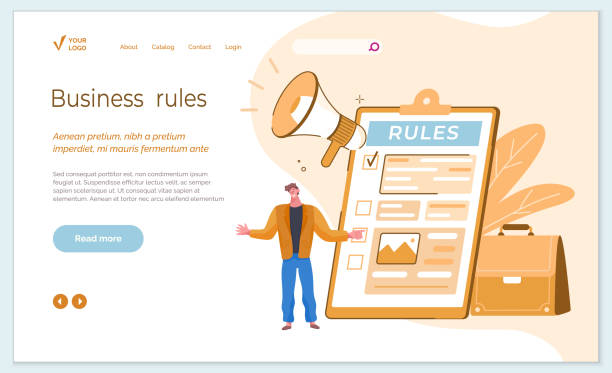
Choosing and implementing a modern UI web design for your business is a strategic decision that requires careful planning.
The first step is understanding your target audience.
Who will be using your website? What are their needs, preferences, and challenges? Answering these questions will help you design a website with a modern UI that is truly functional and appealing to your users.
The second step is defining website goals.
Is the main goal product sales? Providing information? Lead generation? Or building an online community? Clear goals will guide you in selecting design features and elements.
The third step is researching and drawing inspiration from competitors and successful websites.
Reviewing leading websites in your industry and similar industries can give you good ideas, but you should never merely copy.
Always look for ways to improve and add unique value.
The fourth step is choosing the right design team.
Collaborating with designers and developers who have sufficient experience in implementing advanced user interfaces and follow a user-centric approach is very important.
Ask them to present their portfolios and work process.
The fifth step is investing in continuous testing and optimization.
Website design is not a one-time process; it requires continuous review, A/B testing, and optimization based on user feedback and analytical data.
This approach ensures that your website is always improving and updating with the changing needs of users and the market.
By following these tips, you can choose and implement a user-friendly website design for your business that will lead to your long-term success in the online space.
Summary and Final Recommendations for an Outstanding User Interface

Ultimately, modern UI web design is no longer a luxury choice but a necessity for any business aiming to succeed in today’s digital space.
In this article, we covered its importance, key principles, visual and interactive elements, impact on SEO, tools and techniques, challenges and solutions, and case studies of successful websites in this field.
From the importance of responsiveness and simplicity to the vital role of Artificial Intelligence and Voice User Interfaces in the future, all point to one thing: the user is the core of any successful design.
The final recommendation is to always place your users at the center of the design process.
Talk to them, understand their needs, and listen to their feedback.
An outstanding user interface is not only beautiful but also highly functional, provides easy navigation, and offers an enjoyable, friction-free user experience.
Also, remember that website design is a continuous process.
The digital world is constantly changing, and your website must evolve with it.
Building a modern UI website and then abandoning it means losing a competitive advantage.
Continuously monitor your website with analytical data, conduct A/B tests, and look for ways to improve the user experience.
By focusing on these principles and applying best practices, you can ensure that your website not only achieves your business goals but also creates an unforgettable and positive experience for your audience.
This will, in the long run, lead to increased customer loyalty, business growth, and consolidation of your position in the market.
User-friendly website design is an investment in the future.
Frequently Asked Questions
| Question | Answer |
|---|---|
| What is a modern user interface? | A modern user interface refers to a design that uses new trends, simplicity, excellent user experience, and attractive visual elements. |
| Why is using a modern user interface important in website design? | It attracts and retains more users, creates a sense of professionalism, improves user experience, and increases conversion rates. |
| What are the main features of a modern user interface? | Simplicity, sufficient use of whitespace, readable typography, attractive and harmonious colors, subtle animations, and responsive design. |
| How does responsiveness relate to a modern user interface? | Responsive design is an essential feature in a modern user interface that ensures the site displays well on all devices (mobile, tablet, desktop). |
| What is the role of typography in modern UI design? | Choosing appropriate fonts and using them correctly increases readability and contributes to the site’s aesthetics and visual identity. |
| What is Whitespace and why is it important in modern UI? | It is the empty space between different elements on the page that helps improve readability, user focus, and creates a sense of cleanliness and order. |
| What is the benefit of using animations in modern UI design? | Subtle and purposeful animations can capture user attention, improve interaction, and make information transfer more engaging. |
| How can User Experience (UX) be improved alongside a modern UI? | By understanding user needs, simplifying navigation paths, providing appropriate visual feedback, and easy testability. |
| Does a modern user interface always mean using bright colors? | No, a modern user interface can use various color palettes, including dark colors; the important thing is choosing harmonious colors suitable for the brand. |
| What are the current trends in modern UI design? | Use of Dark Mode, Neumorphism, Glassmorphism, scroll-based animations, and minimalist design. |
And other advertising services from Rasawwb Advertising Agency:
Smart Conversion Rate Optimization: Designed for businesses seeking online growth by utilizing real data.
Smart SEO: A fast and efficient solution for user engagement focusing on SEO-driven content strategy.
Smart Website Development: Revolutionize sales growth with the help of customized user experience.
Smart Conversion Rate Optimization: A dedicated service for growth in customer acquisition based on precise audience targeting.
Smart UI/UX: An effective tool for digital branding with the help of real data.
And over a hundred other services in internet advertising, advertising consultation, and organizational solutions.
Internet Advertising | Advertising Strategy | Advertorials
Resources
The Role of UI in Online SuccessThe Importance of Modern Website Design for BusinessesUser Interface and Sales ImprovementThe Impact of User Experience on Websites
❓ Are you looking to elevate your business in the digital world? Rasawwb Afarin, a leading digital marketing agency specializing in SEO, online advertising, and fast website design, paves your path to success.
📍 Tehran, Mirdamad Street, next to Bank Markazi, Southern Kazerun Alley, Ramin Alley, No. 6


